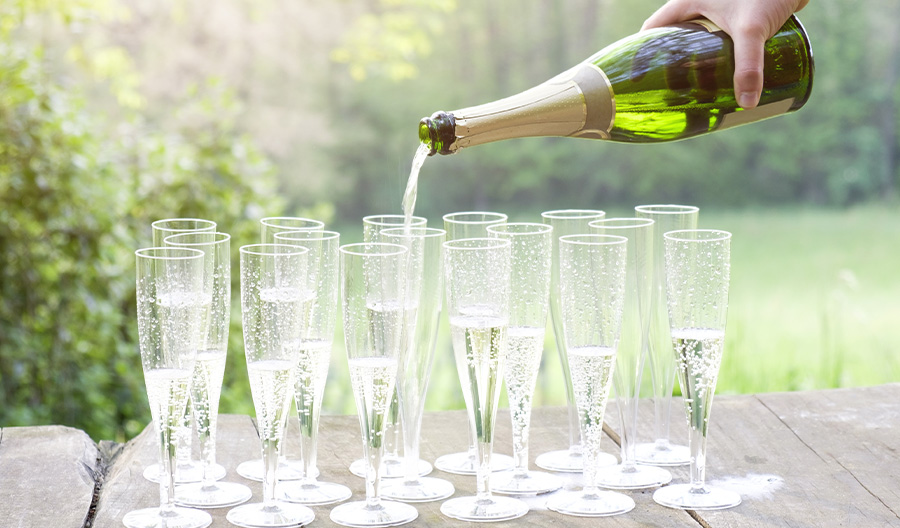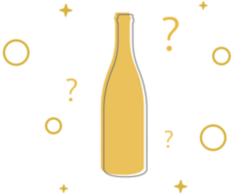Champagne, with its effervescent charm and celebratory allure, is more than just a sparkling wine; it is a symbol of elegance and sophistication. However, the world of Champagne extends far beyond the familiar pop of a cork. In this guide, we embark on a journey through the diverse landscape of Champagnes, exploring the nuances that make each type unique and alluring.
1. Non-Vintage (NV) Champagne
The Everyday Elegance: Non-Vintage Champagnes are a blend of wines from multiple years, crafted to maintain a consistent house style. They are approachable, versatile, and often serve as the flagship offerings of renowned Champagne houses. Expect a harmonious balance of fruitiness, acidity, and minerality.
2. Vintage Champagne
A Year to Remember: Vintage Champagnes are crafted from grapes harvested in a specific year, showcasing the unique characteristics of that vintage. Produced only in exceptional years, these wines often undergo extended aging, resulting in complexity, depth, and the ability to age gracefully.
3. Blanc de Blancs
Pure Elegance: Blanc de Blancs, translated as "white from whites," is crafted exclusively from Chardonnay grapes. Known for its crisp acidity, finesse, and citrusy notes, Blanc de Blancs is a delightful expression of the Chardonnay grape's elegance and purity.
4. Blanc de Noirs
A Touch of Darkness: Contrasting with Blanc de Blancs, Blanc de Noirs is made exclusively from black grape varieties, primarily Pinot Noir and/or Pinot Meunier. This style often presents fuller body, red fruit flavors, and a touch of richness, creating a more robust and structured Champagne.

5. Rosé Champagne:
Elegance in Pink: Rosé Champagne is a delightful expression of the winemaker's artistry. Crafted through the blending of red and white wines or by allowing limited skin contact during maceration, Rosé Champagnes showcase a spectrum of flavors from red berries to floral notes, all within a framework of lively acidity.
6. Prestige Cuvée:
The Pinnacle: Prestige Cuvées represent the pinnacle of a Champagne house's craftsmanship. These exceptional wines are often produced in limited quantities, using the finest grapes from the best vineyards. Prestige Cuvées embody luxury, complexity, and the epitome of the Champagne art. Ask your sales rep for the Presige Cuvées available in your market.
7. Single Vineyard (Vignoble) Champagne:
Terroir Unveiled: Single Vineyard Champagnes emphasize the influence of a specific vineyard's terroir. By focusing on grapes from a particular site, these Champagnes showcase the unique characteristics imparted by the soil, microclimate, and grape varieties of that vineyard.
8. Demi-Sec Champagne:
A Touch of Sweetness: While most Champagnes are dry, Demi-Sec Champagnes offer a touch of sweetness. With a higher dosage of sugar, these wines present a softer, more luscious profile. They are excellent choices for pairing with desserts or as an aperitif for those who prefer a sweeter style.
9. Brut Nature (Zero Dosage) Champagne
Pure Expression: For those who appreciate the unadulterated essence of Champagne, Brut Nature (or Zero Dosage) is the style to explore. These Champagnes have little to no added sugar, allowing the natural flavors and acidity to shine through in a crisp, bone-dry profile.
10. Biodynamic and Organic Champagnes
Sustainable Sparkle: Embracing sustainable and organic practices, some Champagne producers are cultivating grapes using biodynamic and organic methods. These wines showcase a commitment to environmental stewardship, offering a taste of Champagne with a conscience.
As your customers navigate the world of Champagnes, each bottle becomes a unique expression of craftsmanship, terroir, and the art of blending. Whether you savor the everyday elegance of a Non-Vintage or the opulence of a Prestige Cuvée, each type of Champagne adds a distinct note to the symphony of bubbles.

